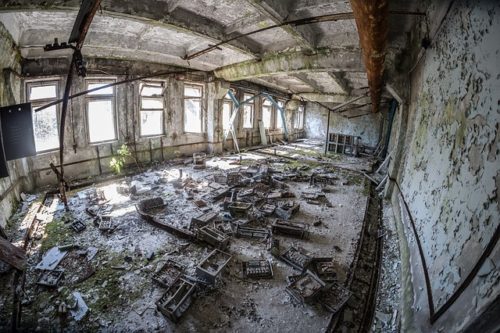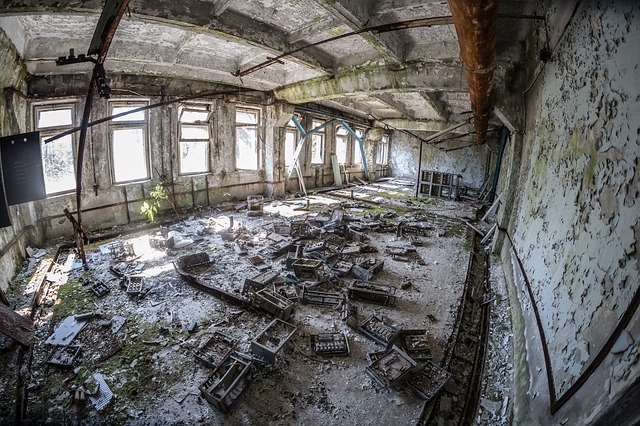
Wow! Nature is amazing. On the walls of the highly radioactive ruins of Chernobyl, black fungi is busy turning radioactivity into food. Now under a sarcophagus, the fungi was discovered a few years after the explosion.
Researchers realized that not only was the fungi impervious to the deadly radiation, it seemed to be attracted to it. They tested some of the fungi and determined that it had a large amount of the pigment melanin — which is also found, among other places, in the skin of humans.
Radiotrophic fungi are fungi which appear to perform radiosynthesis, that is, use the pigment melanin to convert gamma radiation into chemical energy for growth.
In a 2008 paper, Ekaterina Dadachova, then of the Albert Einstein College of Medicine in New York, noted that the fungi attracted to radiation are unlikely to be the first examples of their kind.
“Large quantities of highly melanized fungal spores have been found in early Cretaceous period deposits when many species of animals and plants died out. This period coincides with Earth’s crossing the “magnetic zero” resulting in the loss of its “shield” against cosmic radiation,” the paper’s introduction states.
Kasthuri Venkateswaran, a research scientist at NASA who is leading the experiments on what is called Cryptococcus neoformans fungi, believes that by extracting the radiation-absorbing power and manufacturing it in drug form, it could be used as a ‘sun block’ against toxic rays. He believes this would prevent cancer patients undergoing radiation therapy, nuclear power plant engineers, and airline pilots from absorbing the deadly rays.

